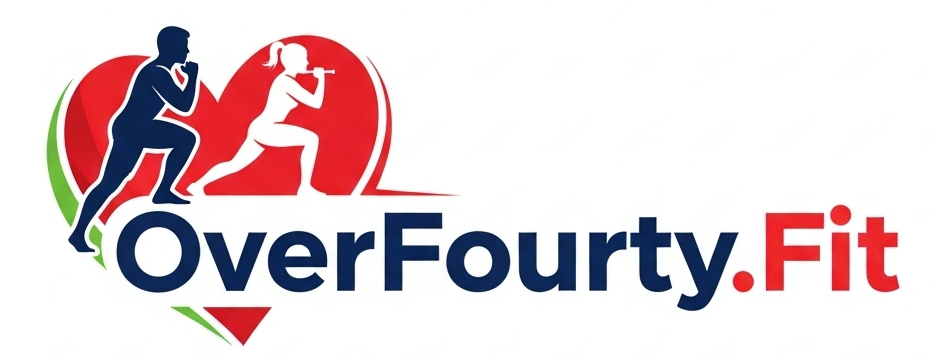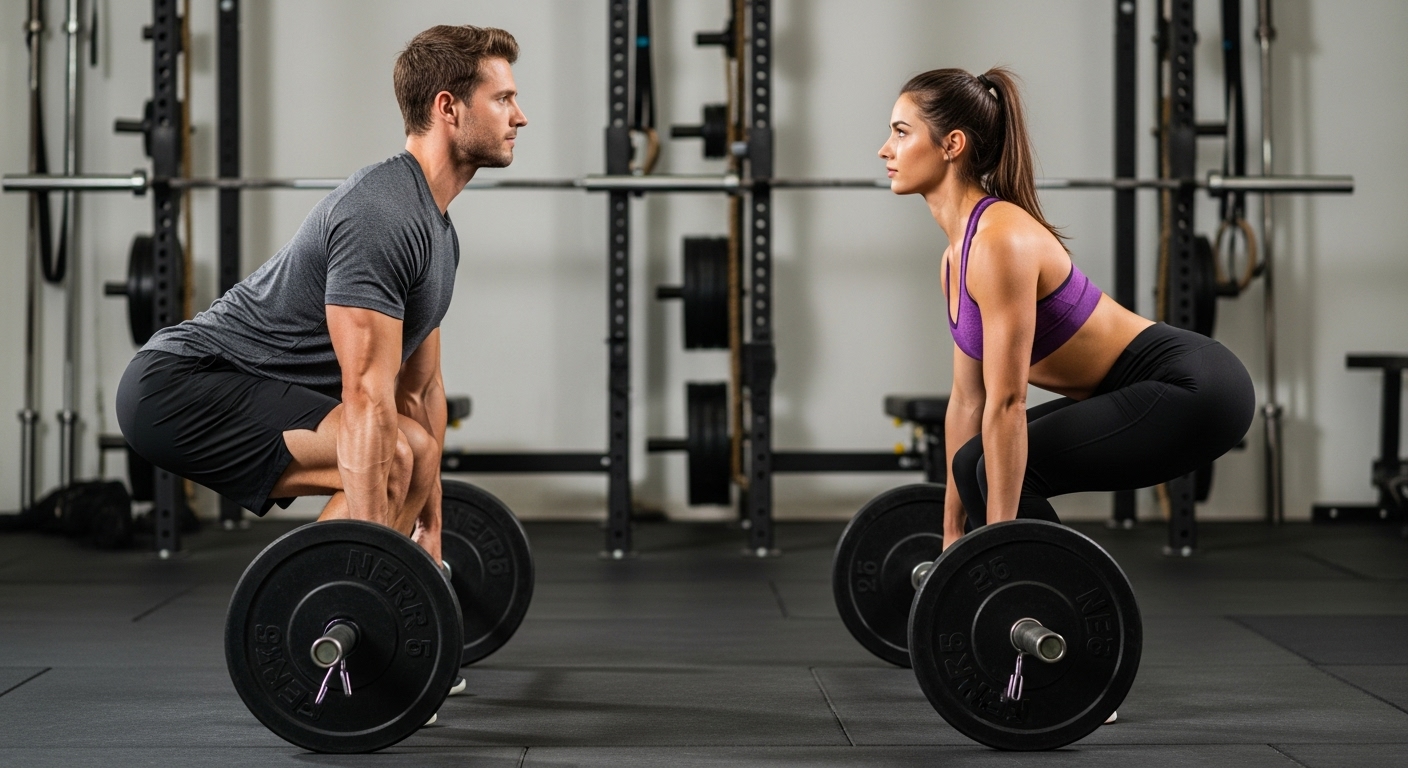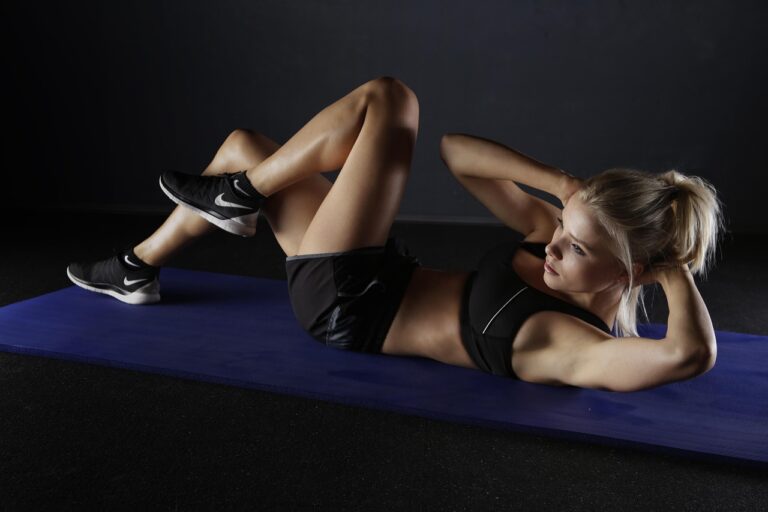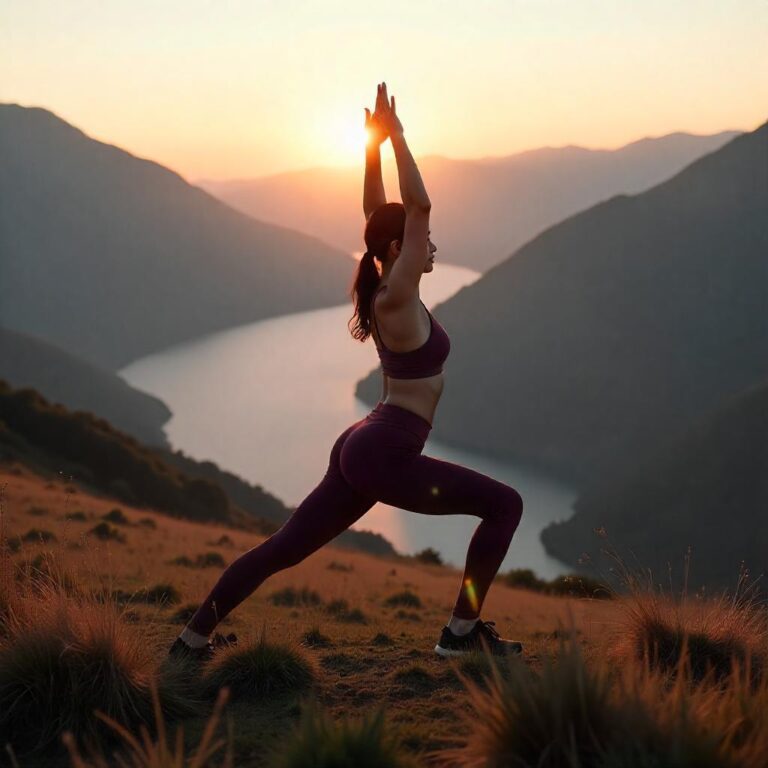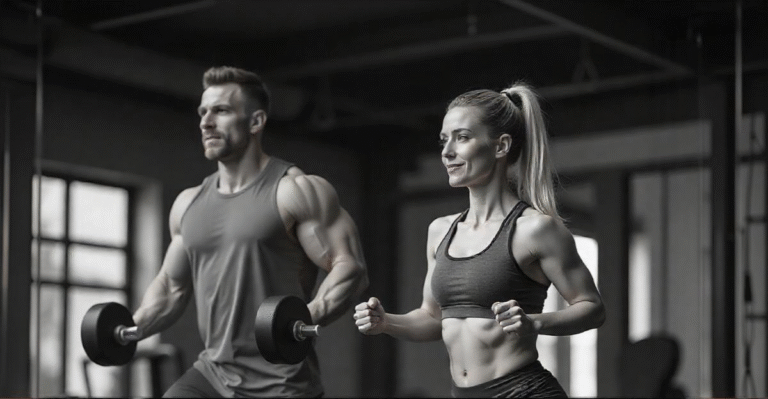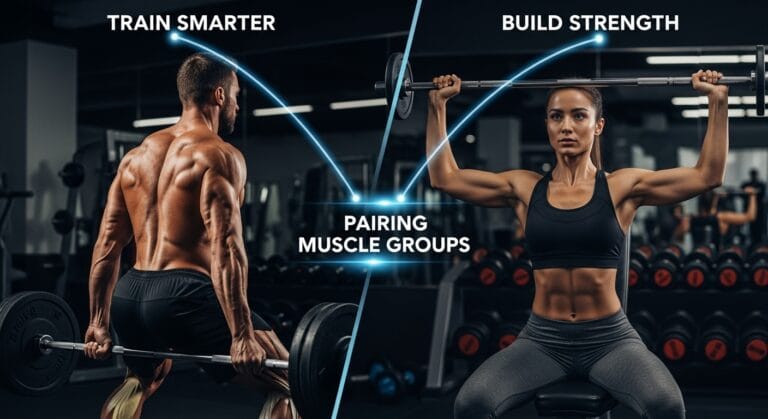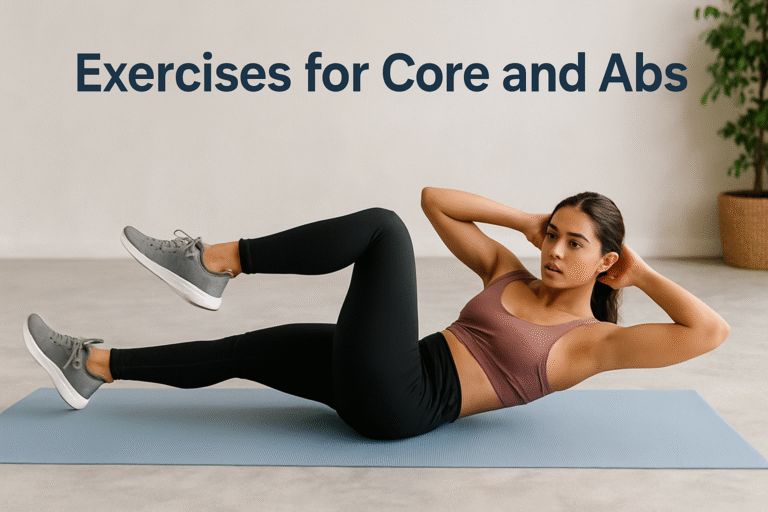Romanian Deadlift: Form, Benefits, and Muscles Worked
The Romanian Deadlift (RDL) is one of the best exercises to strengthen your hamstrings, glutes, and lower back while improving posture and overall athletic performance.
Unlike the conventional deadlift, this variation emphasizes the hip hinge movement, making it safer on the knees and excellent for long-term strength training.
What is the Romanian Deadlift?
The Romanian deadlift is a posterior chain exercise that trains the hamstrings, glutes, and spinal erectors. It was popularized by Olympic weightlifters to build pulling strength and hip power. Today, it’s a staple in strength training programs because it improves both functional strength and injury prevention.
Muscles Worked in the Romanian Deadlift
The RDL targets multiple muscles, making it a compound lift. Here’s a breakdown:
| Primary Muscles | Secondary Muscles |
|---|---|
| Hamstrings | Core |
| Glutes | Forearms (grip strength) |
| Erector Spinae (lower back) | Upper back stabilizers |
Key Point: The RDL is especially effective for the hamstrings and glutes, which are often undertrained compared to the quads.
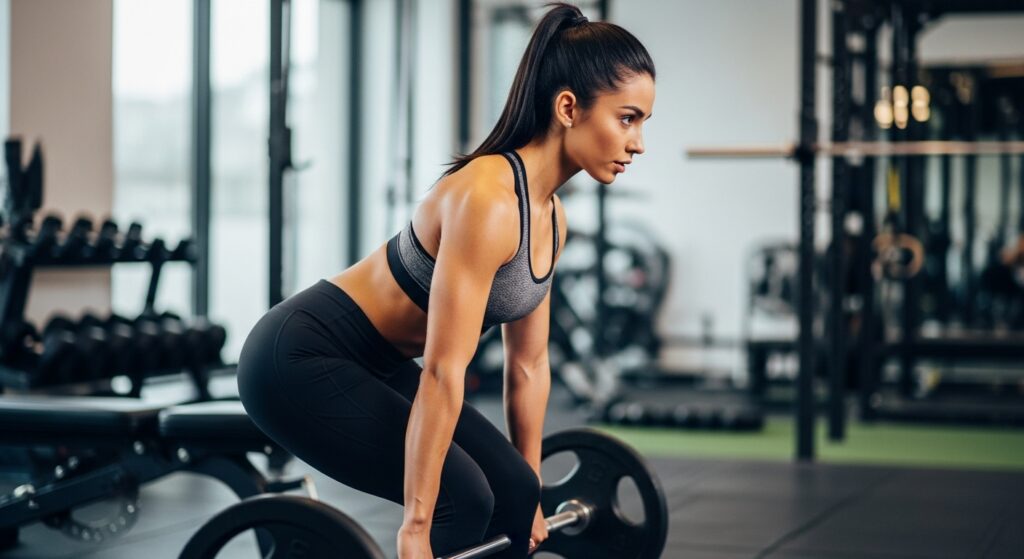
How to Do the Romanian Deadlift with Proper Form
Step-by-Step Technique
- Stand with feet hip-width apart, holding a barbell in front of your thighs.
- Keep your knees slightly bent and spine neutral.
- Hinge at the hips, lowering the barbell down the front of your legs.
- Lower until your hamstrings feel a deep stretch (barbell around mid-shin).
- Drive your hips forward to return to standing.
Form Cues
- Keep your back flat, not rounded.
- Push your hips back, don’t bend your knees too much.
- Move slowly and under control.
Romanian Deadlift Variations
1. Dumbbell RDL
- Easier for beginners.
- Improves balance and grip strength.
2. Single-Leg RDL
- Trains stability and coordination.
- Excellent for athletes and injury prevention.
3. Trap Bar RDL
- More joint-friendly.
- Keeps weight closer to your center of gravity.
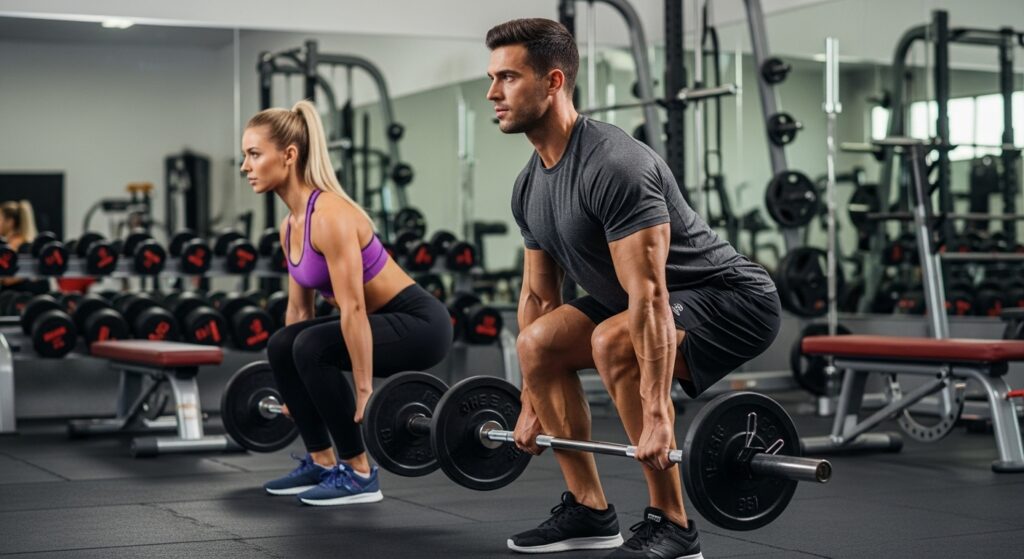
Romanian Deadlift vs Conventional Deadlift
Both exercises train the posterior chain, but they differ in range of motion and muscle emphasis.
| RDL | Conventional Deadlift |
|---|---|
| Focuses on hamstrings and glutes | Engages more quads and full body |
| Shorter range of motion | Longer range of motion |
| Emphasizes hip hinge | Mix of knee bend and hip drive |
| Less stress on the lower back | Higher spinal loading |
Tip: If your goal is posterior chain strength and flexibility, the RDL is the better option. For overall powerlifting strength, the conventional deadlift is essential.
Benefits of the Romanian Deadlift
1. Builds Strong Hamstrings and Glutes
The RDL isolates the posterior chain better than almost any other lift.
2. Improves Athletic Performance
Explosive hip drive carries over to sprinting, jumping, and sports.
3. Enhances Mobility and Flexibility
The controlled stretch improves hamstring flexibility.
4. Reduces Injury Risk
Strengthening the posterior chain lowers the chance of knee and back injuries.
Programming the RDL
| Training Goal | Reps & Sets | Load Recommendation |
|---|---|---|
| Strength | 4–6 reps × 3–5 sets | Heavy (70–85% of max) |
| Hypertrophy (muscle growth) | 8–12 reps × 3–4 sets | Moderate |
| Endurance / Mobility | 12–15 reps × 2–3 sets | Light |
Pro Tip: Use the RDL once or twice per week as part of your leg day or posterior chain workout.
Common Mistakes in the RDL
1. Rounding the Back
Keep the spine neutral to protect the lower back.
2. Bending Knees Too Much
Remember, it’s a hip hinge, not a squat.
3. Using Too Much Weight
Prioritize form before adding load.
Conclusion
The Romanian Deadlift is one of the most effective exercises for building strong hamstrings, glutes, and a resilient lower back. Unlike the conventional deadlift, it emphasizes the hip hinge, making it a safer and more focused way to develop your posterior chain. Whether you’re training for strength, athletic performance, or simply to move better as you age, the RDL deserves a place in your routine.
Start light, focus on form, and progress gradually. With consistent practice, the RDL can improve strength, flexibility, and overall stability, while helping you prevent injuries and perform better in daily life and sports.
FAQs
What muscles do Romanian deadlifts work the most?
The RDL primarily targets the hamstrings and glutes, with support from the lower back and core.
Is the Romanian deadlift better than the conventional deadlift?
Neither is “better,” but the RDL isolates the hamstrings and glutes, while the conventional deadlift engages more muscles overall.
Are Romanian deadlifts safe for beginners?
Yes, as long as proper form is followed. Beginners should start with dumbbells or light weights.
Can you do Romanian deadlifts with dumbbells?
Absolutely. Dumbbell RDLs are beginner-friendly and improve balance.
What is the difference between the Romanian deadlift and the stiff leg deadlift?
The stiff leg deadlift keeps the knees locked, which stresses the lower back more. The RDL allows a slight knee bend, making it safer and more effective for the hamstrings.
What is the Romanian deadlift good for?
The RDL is good for building hamstring and glute strength, improving hip mobility, and strengthening the lower back. It’s one of the best exercises for developing the posterior chain, which helps with athletic performance and injury prevention.
What’s the difference between a deadlift and a Romanian deadlift?
The main difference is the range of motion and muscle focus. A conventional deadlift starts from the floor and works the quads, glutes, and back together. A Romanian Deadlift starts from a standing position, keeps the barbell above the ground, and emphasizes the hamstrings and glutes through the hip hinge.
How to do an RDL properly?
To do a Romanian Deadlift properly:
- Stand with feet hip-width apart, holding the barbell in front of your thighs.
- Keep knees slightly bent and back neutral.
- Push your hips back and lower the bar along your thighs until you feel a hamstring stretch.
- Keep the bar close to your body.
- Drive hips forward to return to standing.
Are Romanian deadlifts for the back or the glutes?
It primarily target the glutes and hamstrings, but they also strengthen the lower back and core as stabilizers. The main focus is hip extension, which makes it more of a glute and hamstring exercise than a back exercise.
